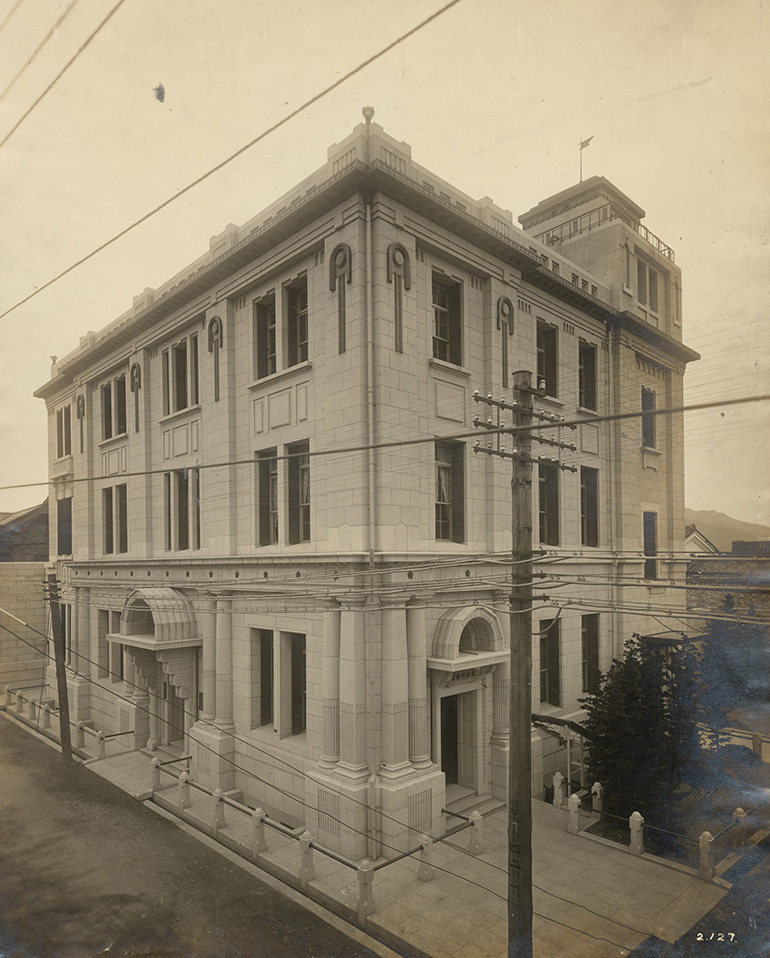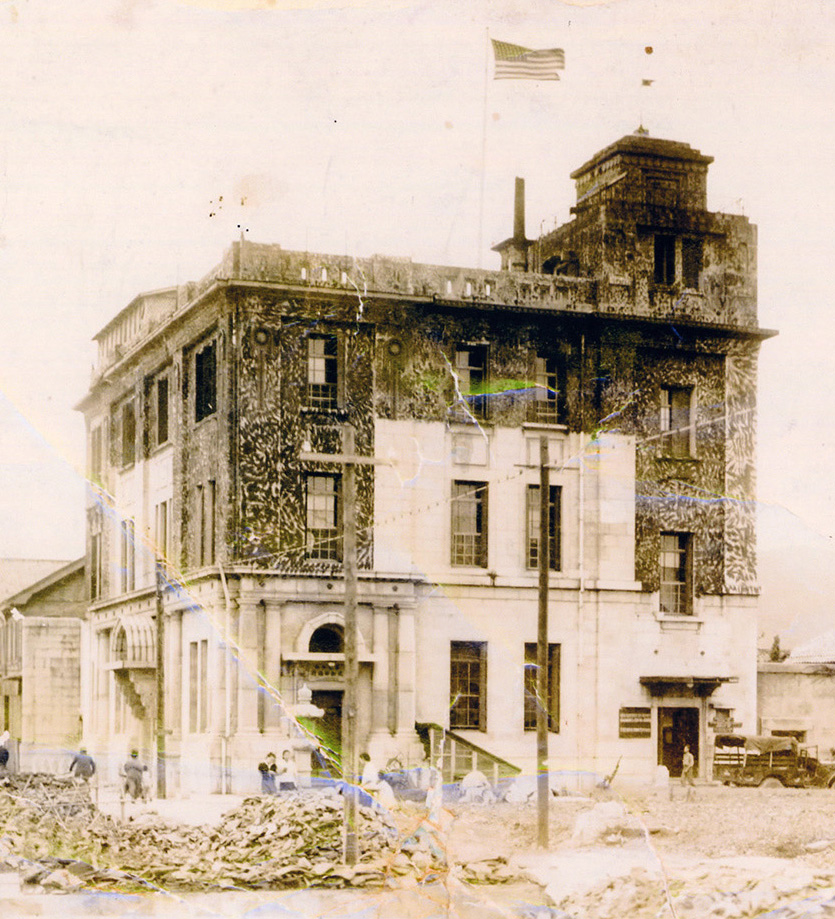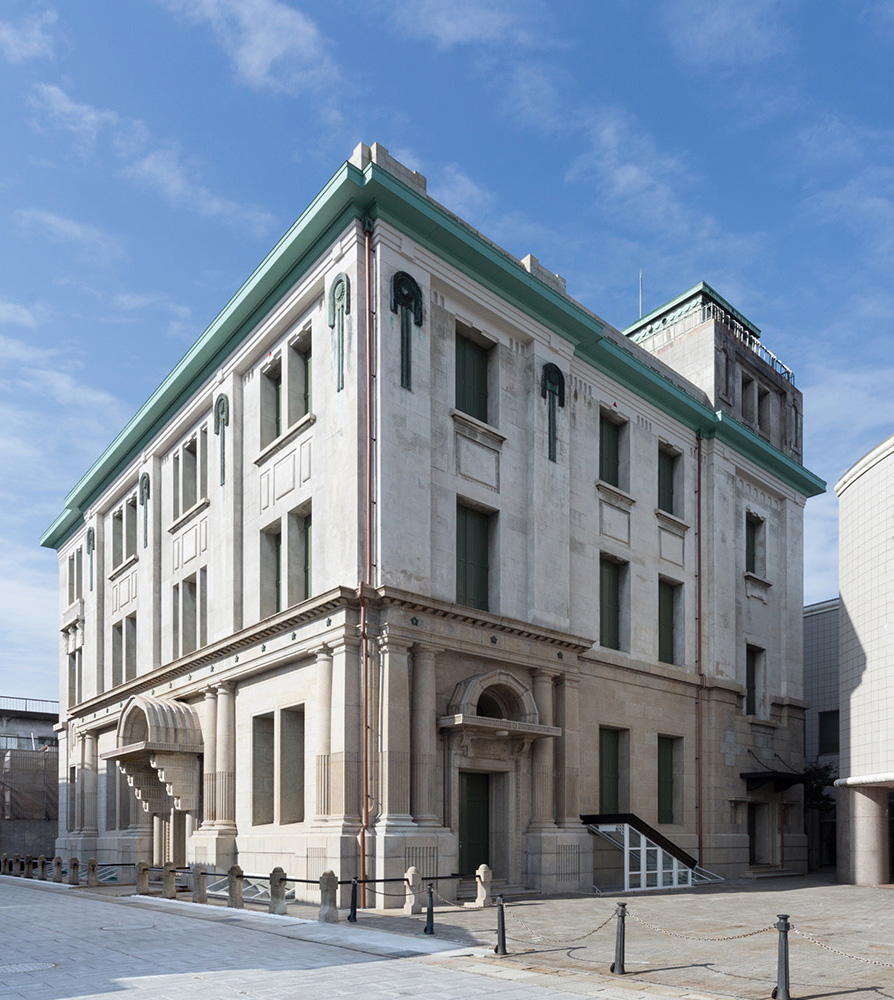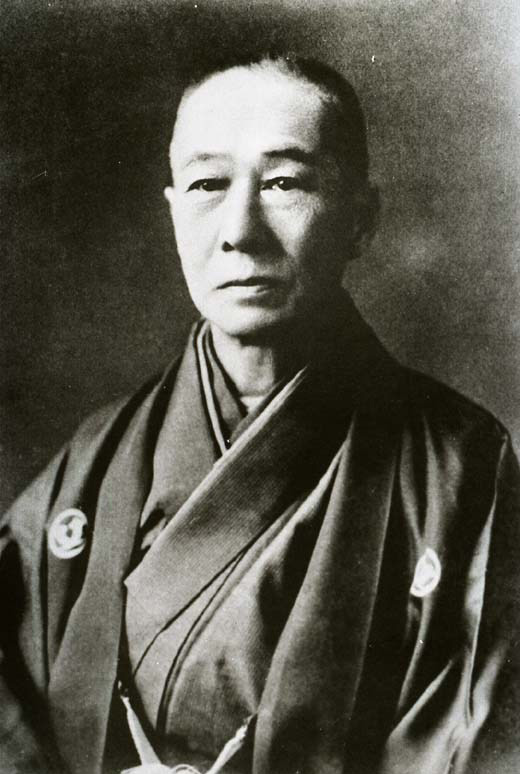Important Cultural Property: The Second Main Office of Owada Bank



The building of the Tsuruga Municipal Museum was formerly the second main office of the Owada Bank, which was established by Owada Shoshichi in 1927. It used to be the center of politics and economy in Tsuruga.
The construction of the bank’s main office started in 1925 and was completed in 1927. It is a three-floor building and has a basement. The building was constructed using bricks and concrete with a steel frame.
After World War II, the Owada Bank was merged with other local banks, and in 1977, its building was donated to the municipal corporation of Tsuruga.The museum started as the Tsuruga Folklore Archives Center in 1978. However, the interior and the structure had started to decay at that time.
The project for the building’s restoration started in 2004. The aim was to restore the structure to the original condition of Owada Bank. In 2015, the project was completed and building reopened as Tsuruga Municipal Museum. In 2017, this building was designated as an Important Cultural Property by Japan’s Agency for Cultural Affairs.
Building Structure
| NAME | Second Main Office of Owada Bank |
| ADDRESS | 7-8, Aioi-cho, Tsuruga City, Fukui Prefecture, Japan |
| BUILDING DATE | 1927 |
| ARCHITECTS | Mr.Nagase, Mr. Yoshida |
| BUILDER | Shimizu-gumi Kyoto branch office |
| REGISTRATION | Important Cultural Property (Structure) |
| STRUCTURES | Brick and concrete with a steel frame. Three floors above ground and one basement floor. Total floor area: 1417.7㎡ |
Who is Owada Shoshichi II?

Owada Shoshichi II was born as Yamamoto Kamejiro. “Shoshichi” was the name given to him by the Owada family after they adopted him.Kamejiro was born in 1857 in a pharmacist’s family. As he suffered from weak health, he did not attend elementary school. However, he studied mathematics by himself and wished to be a mathematician. He was able to attend school for the first time when he was 15 years old in 1872.
The opportunity to change his life came in 1878. Kamejiro got married to Masuko the daughter of Owada Shoshichi I, and in 1887, Kamejiro got the name of Shoshichi. Later, he became Owada Shoshichi II. Shoshichi established the Owada Bank in 1892. At the same time, Tsuruga began to develop as a modern port town, and in 1884, the railway started operating in Tsuruga. Later, in 1899, the port was designated as an international trading facility.
The policies of Owada Bank made it attractive to customers. The bank loaned money to its customers at a lower interest rate compared to other local banks in the Hokuriku area. It installed a telephone system ahead of other banks to speed up work, and the bank was known for being kind to customers. Owada Bank opened branch offices in Osaka and Kanazawa, and in 1918 it changed into a joint-stock bank.
In 1927, Shoshichi inaugurated the second main office, which currently houses the Tsuruga Municipal Museum. While the building was damaged in a bomb in attack 1945, it was not destroyed completely. Just after World War II, the office was commandeered by the US Army. After Owada Bank was merged into another bank, the office building was used by other local banks, such as Sanwa Bank and Fukui Bank.
Shoshichi contributed not only to Owada Bank but also to the local economy of Tsuruga. He helped in establishing the Tsuruga Chamber of Commerce and Industry to boost the rope and straw mat sector.
Shoshichi spent his later life in Beppu, Oita Prefecture, and he passed away in 1947.
Owada Bank in the Modern Period
| year | Events relating to Owada Bank and Owada Shoshichi | Events in the world and Japan |
|---|---|---|
| 1857 | Shoshichi was born in Tsuruga. | |
| 1867 | Beginning of the Meiji era | |
| 1871 | Tsuruga Prefecture was established. | |
| 1872 | The first railway line was established in Japan. | |
| 1876 | Tsuruga incorporated into Ishikawa Prefecture. | |
| 1878 | Marriage to OwadaMasuko. | The end of the Russo-Turkish War |
| 1881 | Fukui Prefecture was formed. | |
| 1884 | The first railway was operated in Tsuruga. | |
| 1887 | Succeeded the name of Shoshichi | |
| 1892 | Established Owada Bank | |
| 1899 | Tsuruga port became an international trading port. | |
| 1902 | TheTsuruga-Vradiostock sailing route was opened. | |
| 1912 | Asia-Europe International Train started between Tokyo and Tsugura | |
| 1914 | World War I broke out. | |
| 1922 | Washington Naval Conference (a disarmament conference) | |
| 1923 | Great Earthquake in the Kanto area, Japan | |
| 1927 | Built the new main office of Owada Bank | |
| 1929 | The Great Depression | |
| 1936 | Tsuruga 25 Bank was merged into Owada Bank. | |
| 1939 | World War II broke out in Europe. | |
| 1941 | Mikata Bank was merged into Owada Bank. | Pacific War broke out. |
| 1943 | Owada Savings Bank was merged into Owada Bank. | |
| 1945 | Owada Bank merged into Sanwa Bank. | Bombing of Tsuruga End of World War II |
| 1947 | Shoshichi passed away in Oita. | |
| 1962 | Sanwa Bank was closed in Tsuruga. The building of the office was used as a branch office of Fukui Bank. | The Constitution of Japan was drafted. The nuclear power plant was constructed to Tsuruga. |
| 1963 | Heavy snow disaster in Fukui | |
| 1964 | Tokyo Olympic | |
| 1977 | The Owada Bank office building was donated to Tsuruga city. | |
| 1978 | Tsuruga History and Folklore Archives Center was established in the office building of Owada Bank. | The Treaty of Peace and Friendship between Japan and the People’s Republic of China was concluded. |
| 1993 | THFAC changed to Tsuruga Municipal Museum. | The nuclear reactor “Monju” was constructed in Tsuruga. |
| 1995 | The great earthquake in Hyogo | |
| 2001 | September, 2001 attacks in the US | |
| 2011 | March, 2011 Tōhoku Earthquake and Tsunami in Japan | |
| 2012 | The commencement of the restoration project of the building. | |
| 2015 | The completion of the restoration project and the reopening of Tsuruga Municipal Museum reopened. | |
| 2017 | The second main office of Owada Bank was designated as an Important Cultural Property. |
